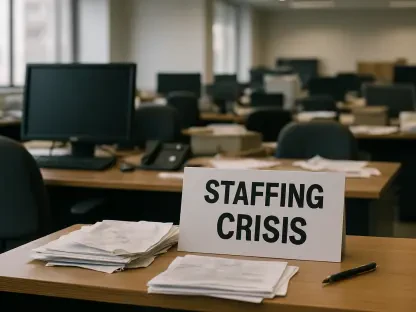What happens when over 1,000 baristas from 65 Starbucks stores across 40 cities decide to walk off the job during one of the busiest promotional days of the year, sending shockwaves through the coffee giant’s operations? On November 13, a massive strike erupted, orchestrated by Starbucks Workers United (SBWU), making a bold statement against years of unresolved tensions, timed to coincide with Red Cup Day, when stores brim with eager customers. The air is thick with picket lines and protest chants, as workers demand change in a clash that could redefine labor battles in the retail world.
The significance of this strike lies in its scale and timing, marking a pivotal moment in the ongoing struggle between SBWU and Starbucks. With more than 550 stores unionized yet no contract secured after years of effort, this action—potentially the longest in the company’s history—highlights a deepening rift. It’s not just about the workers on the line; it’s a signal of broader labor unrest in America, challenging corporate giants to address employee grievances amid economic and political uncertainty. This standoff could set a precedent for how large employers navigate union demands in today’s shifting landscape.
A Strategic Strike on Red Cup Day
The decision to strike on Red Cup Day was no accident—it’s a calculated move to maximize impact. This annual event draws massive crowds with free reusable cups, making it a peak revenue day for Starbucks. By walking out now, SBWU aims to disrupt operations at a critical time, drawing public attention to their cause. Over 1,000 workers across 65 stores are involved, shutting down locations in 40 cities and creating a logistical nightmare for the company.
This timing also amplifies the union’s message about workplace struggles. Baristas face intense pressure during promotional events, often with inadequate staffing, a key grievance driving the strike. By targeting this high-visibility moment, SBWU ensures that customers and media alike take notice of their demands for better wages, benefits, and working conditions, putting pressure on corporate leadership to respond.
Core Issues Fueling Worker Discontent
At the heart of this labor action are deep frustrations over stalled negotiations and daily operational challenges. National bargaining talks, which began earlier this year, collapsed due to disagreements over economic proposals. SBWU claims Starbucks rejected their demands for fair pay and benefits while offering insufficient counteroffers, leaving workers feeling dismissed and undervalued.
Beyond the bargaining table, day-to-day issues like understaffing during peak hours have fueled widespread discontent. A striking worker, Dachi Spoltore, described the chaos of managing long lines with too few hands, a sentiment echoed by many. With over 92% of participating workers voting in favor of the strike, the unity is clear—baristas are fed up and ready to fight for a workplace that respects their needs.
Union Strength and Tactical Planning
SBWU has shown remarkable preparation for this open-ended strike, a shift from past symbolic actions to a sustained effort. Strike captains have been elected, and shopfloor leadership has been built to maintain momentum across dozens of locations. This organizational strength signals a commitment to a long-haul battle, surpassing even the 64-day single-store strike in Boston a few years ago.
The union’s strategy extends beyond logistics to public perception. By framing the strike as a response to alleged labor law violations and stalled talks, leaders are rallying community support. Their focus on relatable issues—such as the struggle to serve customers without enough staff—helps connect with a broader audience, potentially swaying public opinion in their favor as the strike unfolds.
Voices from the Picket Lines and Corporate Pushback
On the ground, the resolve of striking workers is palpable, matched by sharp rhetoric from union leadership. SBWU President Lynne Fox has accused Starbucks of dragging its feet in negotiations and committing labor violations, declaring that workers have no choice but to strike until serious offers are made. Barista Michelle Eisen added a warning of further escalation if demands remain unmet, hinting at the possibility of an even larger movement.
In contrast, Starbucks’ executive vice president, Sara Kelly, has defended the company’s stance, pointing to recent investments in labor, including the hiring of thousands of assistant store managers. The corporate narrative emphasizes a desire to avoid strikes and highlights existing benefits, yet it struggles to address the core mistrust. This divide—between worker frustration and company defense—reveals a chasm that may not close without significant compromise.
Navigating the Road Ahead for All Sides
As the strike persists, actionable paths emerge for workers, customers, and Starbucks management. For SBWU and its members, maintaining solidarity through strong leadership and clear communication is vital. Highlighting tangible issues like understaffing can sustain public support, while preparing for potential political shifts—such as changes in labor board policies—will be crucial for long-term success.
Customers, meanwhile, face disruptions but can play a role by staying informed about local store impacts and respecting picket lines. Engaging with union campaigns or simply acknowledging the workers’ plight during delays offers a way to align with the cause. For Starbucks, revisiting economic proposals with a focus on core concerns like staffing levels could rebuild trust, especially under the current business pressures of flat customer traffic under CEO Brian Niccol.
Looking back, the strike that began on November 13 stood as a defining chapter in the labor history of Starbucks, revealing the raw tension between a determined union and a corporate giant. Reflecting on the events, it became evident that resolution hinged on dialogue and compromise. Moving forward, both sides needed to prioritize transparent negotiations to prevent further escalation. For workers, continuing to build community alliances offered a buffer against challenges. For the company, addressing operational pain points promised a path toward stability. Ultimately, this clash underscored the power of collective action, urging all stakeholders to seek sustainable solutions in an ever-evolving labor landscape.









